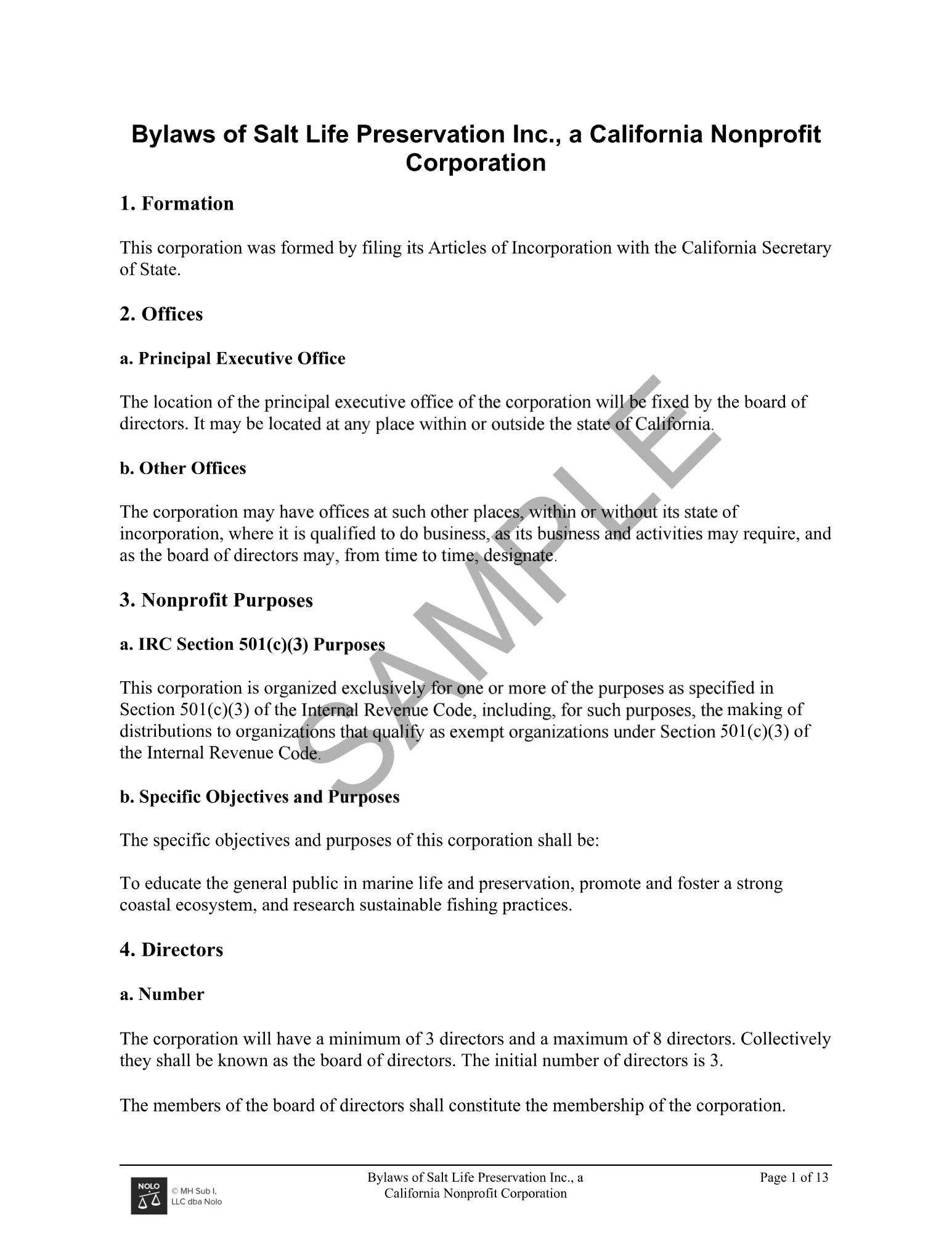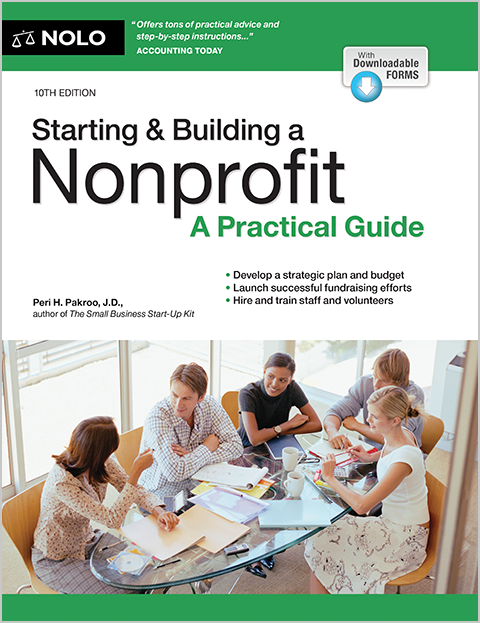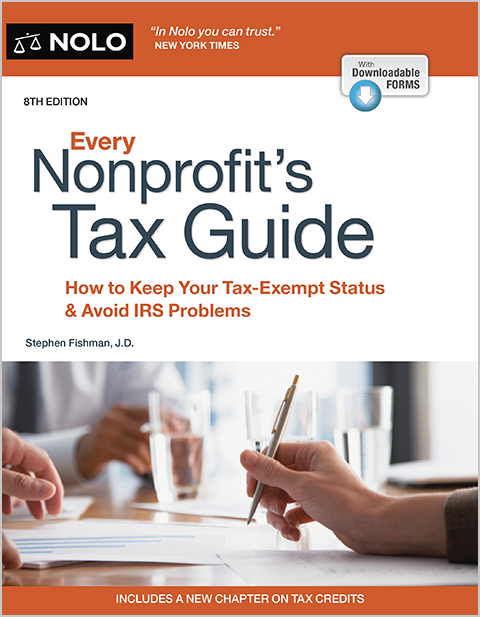A nonprofit's bylaws provide the rules and procedures for running the organization.
When you create a nonprofit, one of your most important steps will be to draft the organization's bylaws. A nonprofit's bylaws establish the internal rules for operating the organization.
The board of directors, tasked with setting policies and overseeing the nonprofit, will follow the rules and procedures outlined in the bylaws.
Why Do Nonprofits Need Bylaws?
Some states require nonprofits to have bylaws. But even if your state doesn't have this requirement, it's a good idea to create this foundational legal document.
Bylaws can:
- help directors run your organization
- resolve conflicts among directors, and
- demonstrate to the public and the IRS that your organization is responsibly managing donations to further the nonprofit's charitable mission.
You're not typically required to share your bylaws with the public. But posting your nonprofit bylaws in a place where the public can freely view them (like your organization's website) can demonstrate transparency and accountability. Companies and individuals are usually more likely to donate their time and money to a nonprofit that's forthcoming about their internal structure and policies.
What Should You Include in Your Nonprofit's Bylaws?
Your bylaws will provide basic information about your organization and the rules that will govern your board of directors. Although the law doesn't require nonprofits to include any specific provisions, you should address anything essential to how your nonprofit will function to give your board adequate guidance to run the organization.
Your Nonprofit's Name and Address
At the top of your bylaws, you should include your nonprofit's legal name. For example, your bylaws can be titled "Bylaws of [Your Nonprofit's Name]." While it might seem obvious to include your nonprofit's name, it's important to put this information somewhere conspicuous and easy to find.
You should also include your nonprofit's principal office address if you have one. Your principal office is like your headquarters. It's the address where:
- you'll keep your organization's important documents
- central decisions will be made, and
- most of your business will be conducted.
If you don't have an address or prefer that this detail be kept open-ended, then you can simply say that the board of directors will designate your nonprofit's principal office. Alternatively, you can provide a city or county as your address.
In addition to including your nonprofit's name and address, you should also name your organization's state of formation. This information helps others know which state's laws govern your nonprofit's operations and where people can look to find your nonprofit's registration.
Your Nonprofit's Purpose
Your nonprofit's purpose statement should communicate two pieces of information:
- which part of the Internal Revenue Code your tax-exempt organization qualifies under, and
- what activities your organization will carry out.
You probably already stated at least part of your nonprofit's purpose in the articles of incorporation. The IRS requires you to include specific language in your articles to qualify for tax-exempt status.
If you're forming a 501(c)(3) corporation, for example, you might want to include the following statement (per the IRS's guidance):
"This corporation is organized exclusively for charitable, religious, educational, and scientific purposes, including, for such purposes, the making of distributions to organizations that qualify as exempt organizations under section 501(c)(3) of the Internal Revenue Code, or the corresponding section of any future federal tax code."
You should follow the above general statement with a more specific purpose statement. For instance, if your nonprofit was created to promote marine life preservation, you can say the following:
"The specific objectives and purposes of this corporation shall be: To educate the general public in marine life and preservation, promote and foster a strong coastal ecosystem, and research sustainable fishing practices."
Anyone reading your bylaws should get a general sense of what your nonprofit is about and what its primary mission is. Unless you plan to expand outside of your listed purposes, you should try to be relatively specific.
Board of Directors and Board Meetings
Your board of directors will be the governing body for your organization. It makes sense that the rules and procedures for directors and board meetings would be a large and important part of your bylaws.
Your bylaws should specify the following about your organization's directors:
- the number of directors (your nonprofit should have at least three directors to prevent delays or issues in obtaining your tax-exempt status)
- the directors' powers and duties
- term length (the term lengths could be scattered) and term limits, if any, of the directors
- qualifications of directors
- the directors' compensation, and
- the procedure for director vacancies, removals, and resignations.
In addition to specifics about the directors themselves, you'll need to lay down rules regarding meetings for the board. Your bylaws should address the following topics on board meetings:
- the place, date, and time for regular meetings
- details on giving notice of board meetings (how many days before the meeting, and method of communication)
- your rule on quorum requirements (how many board members must be present to make a decision)
- the voting procedure at meetings (how many votes each board member gets)
- the minimum vote needed to pass various actions (such as dissolution, major transactions, asset sales, etc.)
- the conduct and structure of meetings
- the procedure for making decisions without a board meeting, and
- rules for attending meetings (like the allowance for meetings over phone or video conference).
You can include various other details in this section of your bylaws. If your organization is larger and will have special committees, such as ones for fundraising or operations, then you can include that information in this section or a new section.
Officers
This section will be somewhat similar to the section on directors, except there's no need to include information about officer meetings. Officers can certainly have meetings but they won't be making operational decisions for the nonprofit like the board will.
Your nonprofit should have a:
- president
- vice president
- secretary, and
- treasurer.
You should provide a description of what each officer will do and include their duties and powers. Like with the directors, you should say how the offices are elected, removed, and replaced as well as their terms of office, minimum qualifications, and compensation.
Corporate Records and Finances
Your bylaws should have one or two sections dedicated to the nonprofit's records and finances. These types of policies are standard and can be responsibly noncommital.
Corporate records: Use this section to specify what records and legal documents will be maintained and where. You should also include a paragraph on directors' inspection rights.
Corporate finances: Under this section, it's a good idea to specify which officer (usually the president or secretary) can sign checks, notes, and other financial instruments on behalf of the nonprofit. You should also clarify who (usually the board of directors) can sign a contract binding the nonprofit to any obligation. You can also include a section on gifts and contributions that can be as detailed or as vague as you'd like. List your nonprofit's fiscal year and any fiscal reports you plan to create and maintain, like a budget and annual financial statement.
Other Matters
As can be expected, a nonprofit has to consider various other matters besides the ones mentioned above. For example, you'll probably want your nonprofits to address:
- your rules for amendments (how can you change the bylaws)
- how you'll handle the dissolution of your nonprofit (when and how you can close the nonprofit)
- how the nonprofit and board should handle conflicts of interest (discussed more in the next section), and
- limitations on your nonprofit's activities.
Remember to review your state's nonprofit laws to make sure your bylaws comply. For instance, many states require nonprofits to have a minimum of three directors, as well as a president, secretary, and treasurer.
When your bylaws don't address an issue that's addressed by state law, your nonprofit must follow the laws of your state. For example, your state might provide that directors serve for terms of one year unless the bylaws provide otherwise. If your bylaws are silent on the matter of terms, by default your directors will have one-year terms; but if you wish, you can use the bylaws to set a different term.
Additional Considerations for 501(c)(3) Nonprofits
Many nonprofits pursue 501(c)(3) tax-exempt status, which allows organizations to avoid certain corporate, sales, and property taxes. The IRS grants tax-exempt status. The IRS doesn't directly require nonprofits to include specific provisions in their bylaws.
However, when you apply for tax exemption, the IRS will look at your bylaws to determine if your nonprofit meets the legal requirements for exemption. By addressing the following provisions in your bylaws, you'll increase your organization's likelihood of gaining 501(c)(3) status:
- The nonprofit's purpose: As mentioned earlier, you can show that your organization's purpose meets the requirements for 501(c)(3) status. Your organization's purpose must be charitable, religious, educational, scientific, literary, for public safety testing, related to amateur sports competitions, or for the prevention of cruelty to children or animals.
- Conflict of interest policy: An exempt organization can't provide a private benefit to an individual, including business dealings with board members. Your bylaws should have a policy that addresses potential conflicts and requires directors to disclose interests and abstain from voting on matters they could personally benefit from.
- Compensation policy for board members: Exempt nonprofits can't pay directors more than a reasonable amount for their time and efforts. Many nonprofits have a policy stating directors will serve without compensation.
- Documents retention and destruction policy: Exempt nonprofits must maintain corporate records and meeting minutes. After a specified period of time (which differs depending on the document), the directors should destroy the records. Your bylaws should set out your procedures for retention and destruction.
- Public disclosure of exemption application and annual tax returns: An exempt organization's tax filings, including the exempt application and annual returns, must be available for public inspection and copying.
- Limitations on activities: Exempt nonprofits can't engage in political activity or substantial lobbying. You can include this limitation in your bylaws.
What Not to Include In Your Bylaws
Your bylaws should address only basic information about your organization and an overview of board procedures, and not the specifics of your day-to-day operations.
Don't include:
- rules that'll be difficult for your board to follow (which they'll want to change), or
- procedures that'll change frequently, because changing bylaws isn't simple—you must follow legal rules to amend your bylaws (as discussed below).
For example, instead of stating the time and address of your board meetings, you can simply state that your board will meet once a month at an agreed-upon location. You might include general descriptions of officer positions that will stay the same throughout the life of the nonprofit, but avoid listing employee positions, which are likely to change.
Drafting Your Nonprofit Bylaws
Your organization's current board of directors will draft and approve the bylaws. Nonprofits often draft bylaws before or shortly after filing formation documents with the state. However, you can create bylaws any time after formation.
Your state laws specify which officers must sign the bylaws, such as the secretary or the president. Unlike other organizational documents, like the articles of incorporation, you don't file bylaws with the state. You must keep them with your nonprofit's records, and ensure they're accessible to board members.
To get you started on your draft and give you a sense of what nonprofit bylaws look like, we provide a sample below of the first page of nonprofit bylaws. If you'd like to create your own full set of customizable bylaws, see our online nonprofit bylaws form.
How and When to Update Bylaws
Make plans to review your bylaws regularly. Review the document whenever the nonprofit undergoes a major change, like moving the organization to a new state or merging with another nonprofit. Also plan to review your bylaws annually, both to make sure you're following them and to update provisions as necessary.
To make amendments, follow the rules outlined in your bylaws, which should provide the number of director votes you need to make amendments (if your bylaws don't provide guidance, check with your state's laws). Record the results of the vote in your meeting minutes.
If your nonprofit has tax-exempt status and you make a "structural or operational" change to your organization, such as changing the name or purpose, you must inform the IRS. For smaller changes, like changing director term limits, you don't need to inform the IRS. You can report some changes on your annual tax return, while the IRS requires you to report other changes on different forms. Check with the IRS for details.




